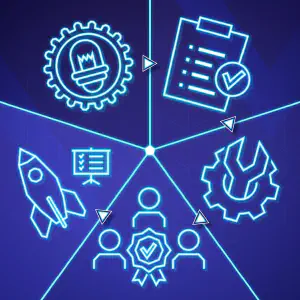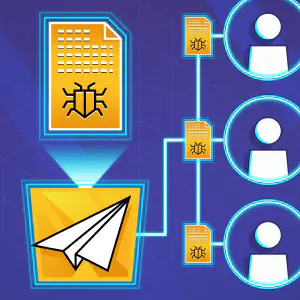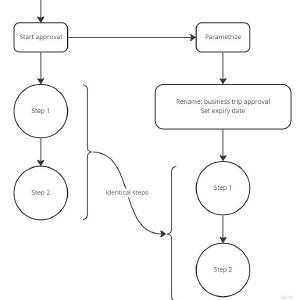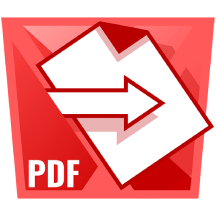
'Adoption is the Most Important Part of Implementing the Tool' - Envorso Customer Success Story
We had the pleasure of sitting down with William and Filip from Envorso , an Atlassian Gold Solution Partner and consulting firm specializing in enterprise agility, digital transformation, and operational excellence. During the interview, they shared insights into how Approval Path for Confluence helped one of their clients solve critical challenges during a large-scale documentation migration to Confluence. Watch the full interview here: For those who prefer reading or are unable to watch the video at this time, we have prepared an interview summary below.

External Share is an app that we use basically every day, it's now a part of our solution
Recently, we had the pleasure of speaking with Maria Luisa Frigerio, Chief Operating Officer at DG Prolink, an Atlassian Silver Solution Partner based in Italy. DG Prolink specializes in HR management and business consulting, helping organizations implement and customize solutions tailored to their unique processes and teams. By combining deep expertise in project and process management with agile frameworks, they deliver exceptional value to their clients. One of the key challenges DG Prolink faces is securely and efficiently sharing content with external stakeholders—including clients, consultants, and partners—without adding them as users to their Atlassian platform.

Integrating Apps for Smarter Workflows: External Share for Jira Meets Smart Fields
In today’s fast-paced business environment, apps for Jira don’t just help teams work smarter - they open the door to even greater potential when integrated. By connecting tools, you empower your team with seamless workflows, enhanced insights, and powerful automation. When we met the Decadis team, we saw an incredible opportunity to combine the strengths of our apps - External Share for Jira and Smart Fields (an app created by Decadis as a complement to their Jira Workflow Toolbox app) - to create a dynamic, user-friendly solution.

Now, External Share for Confluence is a part of our organization. Going back to sharing documents via email feels impossible
We recently had the pleasure of speaking with Fabio Genovese the driving force behind Artigiano del Software, an Atlassian Silver Solution Partner based in Italy. Fabio shared his team’s inspiring journey of adopting External Share for Confluence, highlighting how it transformed their process of collaboration with their customers. Watch the full interview About Artigiano del Software Artigiano del Software provides deep expertise in Atlassian products and apps to create custom solutions tailored to the needs of organizations, whether small startups or large enterprises.

Take a minute to meet Madalina Minut from Life in Codes
We had the pleasure of interviewing Madalina Minut from Life in Codes to discuss their experience using External Share for Confluence. Madalina shared valuable insights into how the app helped streamline their work during a high-stakes event. About Life in Codes Life in Codes is on a mission to help organizations of all kinds work more productively. As an Atlassian Solution Partner active across Romania, Estonia, Belgium, the UK, and the UAE, their team supports clients ranging from startups and SMEs to large enterprises like SWIFT, government organizations such as the European Commission, and global logistics providers like DHL.

Introducing Success & Rejection Steps
At Warsaw Dynamics, we are continually refining Approval Path based on our customers’ feedback, so we can make their workflow flawless. We have introduced Rejection Step previously, and now we have released the Success Step for both Approval Path for Jira and Confluence. In this post, we will explain what these steps are, with some use cases, showing you how they can help Approval Path process more efficiently based on the application version for Jira.

Product Development with Approval Path for Confluence
JES Factory product developers have been tasked with designing new products for the catalogue. Given the complexity of the job, they turned to the Approval Path for Confluence to efficiently coordinate their work with other departments to make sure the product checks off all the boxes. The Journey of the Product Development Lifecycle Ideate and Document the Product Concept The conceptualization team is the first to engage. Organizing and refining their ideas can be chaotic.

Enhancing Bug Reporting to External Developers with External Share for Jira
Today in JES’s Factory things are not going smoothly. The CNC machines have a hard time communicating with the server after a recent software update. The developers can’t figure out the issue on the Factory’s end, so the only option is to get in touch with the hardware company. Fortunately for them, the CNC provider uses External Share for Jira to swiftly communicate such issues. The Factory can report and fix issues faster by using a secured link with the JES Factory developers, bypassing the customer portal and waiting for a CS representative to create an issue.

Streamlined Financial Approvals in Jira
In the financial sector, where precision and compliance are paramount, approval processes have often been the bottleneck, stalling financial transactions. Enter Approval Path: the Jira extension transforms the cumbersome task of obtaining financial approvals into a streamlined, transparent, and swift process. The Challenge of Timely Approvals Imagine a scenario where a finance team is scrambling to get an unbudgeted software update approved. In a traditional setting, this would involve a series of emails, manual tracking of approvals, and constant follow-ups, leading to an agonizing wait - sometimes days - for a green light.

How-to: create your own financial approval with the Conditional feature
The Conditionals feature for the Approval Path creates many possibilities for more complex automation. With it, you can control processes without wasting time and energy analyzing what should happen next. You can set it up once and forget about manual management of approvals. One of the setups we know is often used is financial approval. Let’s look at a scenario: The marketing team needs a new camera and photo editing software budget.

Navigating Feature Deployment with Approval Path for Jira
OrbTech, a hypothetical mid-sized tech company, is deploying a new feature. The recent development of a new functionality takes many steps and requires cooperation from multiple departments. Let’s dive into their journey, highlighting how the Approval Path for Jira played a pivotal role. Creating the feature Maya, the dev lead, initiates the first approval request using Approval Path within their Jira system to ensure the new feature meets OrbTech’s initial standards and requirements.

Approval Path start parametrization
It’s about convenience and more! What is parametrization? In this context, parametrization is a rather fresh feature of Approval Path, and we think it could boost user experience a lot! Well, at least for users that use Approval Path more excessively. Here is why! Functionalities Parametrization will allow you to re-use an existing path (definition) while you conveniently rename the approval just before you start it! Also it allows you to set expiry dates.

Example uses of the approval process
With the growth of the company, comes a moment when standardization of the approval process becomes necessary. It could be a moment, when different people are responsible for the decision and realisation, or when reaching each approver becomes too time-consuming. The approval process can be carried out in an outdated way - with emails, PDFs, Word documents, or at worst, on paper… But luckily we can use approval management apps like Approval Path for Jira and Approval Path for Confluence to improve the process.






